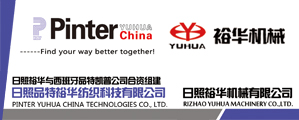What does the third quarter report of 107 textile and apparel listed companies show?
Dec 31, 2019 | by CT
As of December 13, 2019, the third quarter report of 107 textile and apparel listed companies in Shanghai, Shenzhen, Hong Kong stock exchange, which the reporter has paid attention to, has been disclosed. The performance report shows that the operating income of 33 companies and net profit attributable to shareholders of listed companies increased, while the operating income of 31 companies and net profit attributable to shareholders of listed companies decreased.
Nearly 50% of enterprises have increased their net profit. Based on the statistics of the net profit increase attributable to shareholders of listed companies, a total of 52 companies had net profit growth, and 21 companies had net profit growth of more than 30%. Based on the statistics of the decline in net profit attributable to shareholders of listed companies, a total of 53 companies had a decline in net profit, and 34 companies had a net profit decline of more than 30%.
People in the industry believe that the reason for the slight decline in the first three quarters of 2019 revenue year-on-year is mainly due to the uncertainty of the foreign trade environment, which has slowed down orders from overseas customers. At the same time, the growth of domestic downstream demand slows down, and domestic and foreign orders are under pressure. The decline in profitability was due to a lack of orders, which resulted in a decline in capacity utilization, an increase in unit costs, a combination of price reductions and destocking, and continuous declines in cotton prices. In terms of operations, there is a backlog of commodity inventory and a slowdown in inventory turnover, but thanks to the more cautious stock preparation by companies, procurement expenditures have decreased year-on-year, and cash flow has increased. However, some leading textile manufacturing companies have maintained rapid growth.
The effects of the transformation of some textile enterprises have been evident, and the enterprises have been under pressure during the adjustment period. Although Shanghai Sam’s Group’s the third quarter report is impressive, the business related to the textile sector is affected by the external trading environment, the import and export trade income has decreased, the cost of self-operated business has increased, and operating losses have occurred. The performance report shows that the home textile company has seen an online recovery and offline differentiation. The performance of Mercury Home Textiles has resumed rapid growth, and LOVO Home income has remained stable. The decline of Fuanna’s performance was mainly due to the company’s strengthening of channel inventory cleaning, slowing the pace of delivery and the increase in sales expense ratio. It’s not just the textile and home textiles sectors that have seen differentiation.
Not only is the textile and home textiles sectors differentiating. In the apparel sector, some of the casual wear and womenswear companies with outstanding performance have also experienced a decline in performance. In the first three quarters of this year, local casual wear companies GRN-Group, Meters/bonwe, Souyute, Peacebird and Bobaolon all experienced different declines. Regarding the reason for the significant decrease in net profit this year, GRN-Group stated in the announcement that due to the decline in main business income, sales expenses and provision for bad debts increased significantly. The decline in sales revenue of the main brand “Guirenniao” was the main reason for the decrease in main income the reason.
Analysts in the industry believe that the competitive environment of the domestic casual wear market more than a decade ago was relatively loose, and many companies have achieved high growth and high returns. But with foreign fast fashion and casual brands entering the domestic market, the casual wear market is becoming saturated. In the past two years, some companies have seized opportunities such as children’s clothing and sinking the market to earn room for performance growth. There are still many companies whose main brand performance has fallen and failed to make up for shortfalls, resulting in continued sluggish performance.
Outdoor products companies unleash their potential. In recent years, Toread, which focuses on the main business of outdoor products, has continued to improve product competitiveness, further strengthened the influence of brand culture and brand spirit on users, and finally achieved a three-quarter performance counterattack. Toread is also orderly promoting the upgrading and transformation of offline stores with a more experiential sense, and the refined management of sales terminals and the continuous improvement of channel structure. At the same time, various expenses are reasonably and effectively controlled, and non-recurring gains and losses for the current period are expected to increase from the same period of the previous year, and the loss of non-outdoor main businesses will also decrease from the same period of the previous year.
According to the research report of Zhongtai Securities, under the background of weak overall terminal demand in the industry, the leading sub-industries with good growth have significant advantages. At the same time, companies in various sub-sectors should pay attention to the risks of slowing macroeconomic growth, lower-than-expected sales of branded clothing caused by slowing end-user demand, and changes in cotton prices.








